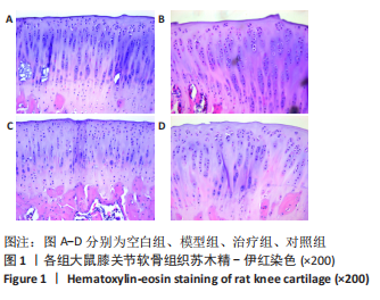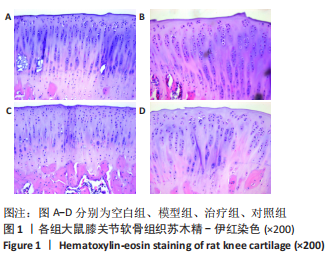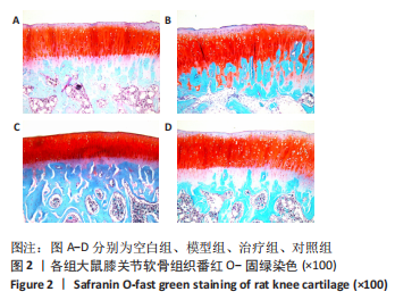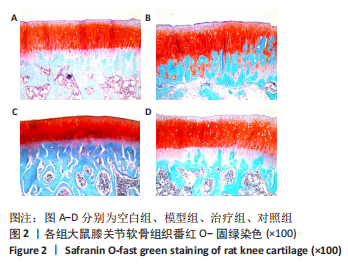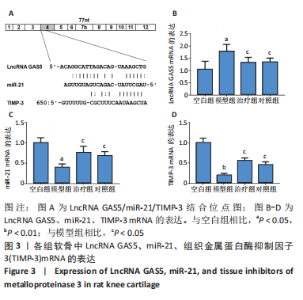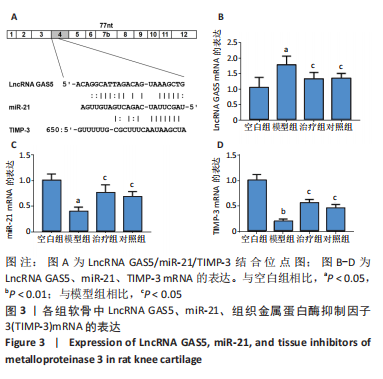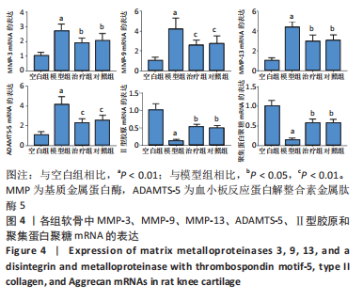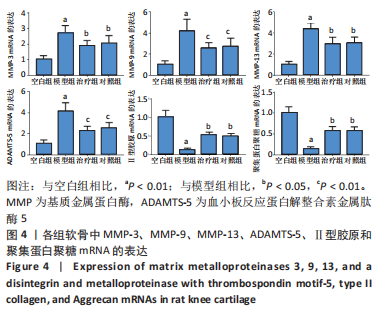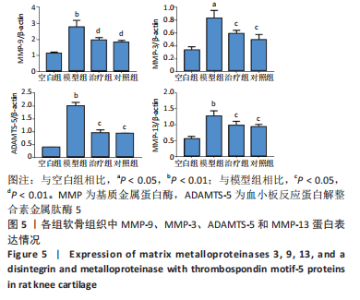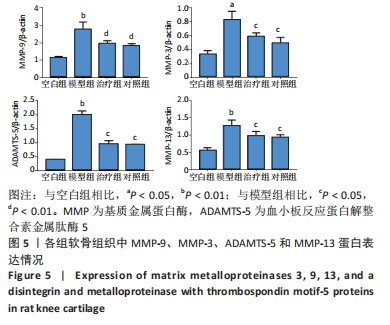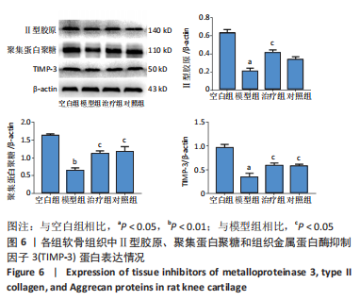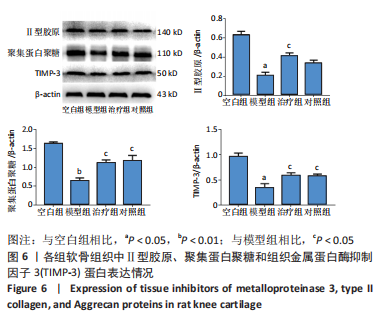[1] HUNTER DJ, BIERMA-ZEINSTRA S. Osteoarthritis. Lancet. 2019;393 (10182):1745-1759.
[2] SHI Y, HU X, CHENG J, et al. A small molecule promotes cartilage extracellular matrix generation and inhibits osteoarthritis development. Nat Commun. 2019;10(1):1914.
[3] GLYN-JONES S, PALMER AJ, AGRICOLA R, et al. Osteoarthritis. Lancet. 2015;386(9991):376-387.
[4] QUICKE JG, CONAGHAN PG, CORP N, et al. Osteoarthritis year in review 2021: epidemiology & therapy. Osteoarthritis Cartilage. 2021;30(2): 196-206.
[5] YOUNG DA, BARTER MJ, SOUL J. Osteoarthritis year in review: genetics, genomics, epigenetics. Osteoarthritis Cartilage. 2022;30(2):216-225.
[6] SUN H, PENG G, NING X, et al. Emerging roles of long noncoding RNA in chondrogenesis, osteogenesis, and osteoarthritis. Am J Transl Res. 2019;11(1):16-30.
[7] ABBASIFARD M, KAMIAB Z, BAGHERI-HOSSEINABADI Z, et al. The role and function of long non-coding RNAs in osteoarthritis. Exp Mol Pathol. 2020;114:104407.
[8] 陈可冀.清宫配方集成[M]. 北京:北京大学医学出版社,2013.
[9] 林洁,范展彪,刘献祥.基于数据挖掘技术探讨陈可冀《清宫配方集成》中治疗骨关节炎组方的用药规律[J]. 中医正骨,2017,29(11): 15-19.
[10] 刘献祥.基于陈可冀学术思想之骨性关节炎研究[J]. 康复学报, 2016,26(1):2-5.
[11] 郑春松,范展彪,叶蕻芝,等.计算机模拟研究荣筋拈痛方治疗骨关节炎的药效物质基础、作用靶点及作用特点[J]. 中医正骨,2017, 29(10):20-24.
[12] 吴广文,黄艳峰,刘献祥.荣筋拈痛方治疗膝骨性关节炎的药理学基础[J]. 福建中医药,2018,49(3):83-85.
[13] 郑春松,范展彪,叶蕻芝,等.从化学空间探讨荣筋拈痛方补肝肾强筋骨和祛风湿止痹痛的作用[J]. 风湿病与关节炎,2018,7(2):33-36.
[14] MOBASHERI A, RAYMAN MP, GUALILLO O, et al. The role of metabolism in the pathogenesis of osteoarthritis. Nat Rev Rheumatol. 2017;13(5): 302-311.
[15] YANG J,HU SS,BIAN YY,et al. Targeting Cell Death: Pyroptosis, Ferroptosis, Apoptosis and Necroptosis in Osteoarthritis .Front Cell Dev Biol. 2021; 9:789948.
[16] JIANG Y. Osteoarthritis year in review 2021: biology .Osteoarthritis Cartilage. 2022;30(2):207-215.
[17] NAM RK, ZHANG WW, LOBLAW DA, et al.A genome-wide association screen identifies regions on chromosomes 1q25 and 7p21 as risk loci for sporadic prostate cancer. Prostate Cancer Prostatic Dis. 2008; 11(3):241-246.
[18] BRAMEIER M, HERWIG A, REINHARDT R, et al.Human box C/D snoRNAs with miRNA like functions: expanding the range of regulatory RNAs. Nucleic Acids Res. 2011;39(2):675-686.
[19] SONG J, AHN C, CHUN CH, et al.A long non-coding RNA, GAS5, plays a critical role in the regulation of miR-21 during osteoarthritis. J Orthop Res. 2014;32(12):1628-1635.
[20] ZHANG Z, ZHU Z, WATABE K, et al. Negative regulation of lncRNA GAS5 by miR-21. Cell Death Differ. 2013;20(11):1558-1568.
[21] LIU X, SHE Y, WU H, et al. Long non-coding RNA Gas5 regulates proliferation and apoptosis in HCS-2/8 cells and growth plate chondrocytes by controlling FGF1 expression via miR-21 regulation. J Biomed Sci. 2018;25(1):18.
[22] LIU K, LIU C, ZHANG Z. lncRNA GAS5 acts as a ceRNA for miR-21 in suppressing PDGF-bb-induced proliferation and migration in vascular smooth muscle cells. J Cell Biochem. 2019;120(9):15233-15240.
[23] YACQUB-USMAN K, PICKARD MR, WILLIAMS GT. Reciprocal regulation of GAS5 lncRNA levels and mTOR inhibitor action in prostate cancer cells. Prostate. 2015;75(7):693-705.
[24] Zhang YJ, JI YS. MicroRNA-21 controls the development of osteoarthritis by targeting GDF-5 in chondrocytes. Exp Mol Med. 2014;46(2):e79.
[25] MASOUDI MS, MEHRABIAN E, MIRZAEI H.MiR-21: A key player in glioblastoma pathogenesis. J Cell Biochem. 2018;119(2):1285-1290.
[26] LOBODA A, SOBCZAK M, JOZKOWICZ A, et al.TGF-beta1/Smads and miR-21 in Renal Fibrosis and Inflammation. Mediators Inflamm. 2016; 2016:8319283.
[27] WANG XB, ZHAO FC, YI LH, et al. MicroRNA-21-5p as a novel therapeutic target for osteoarthritis. Rheumatology (Oxford). 2019. doi: 10.1093/rheumatology/kez102.
[28] ZHU H, YAN X, ZHANG M, et al.miR-21-5p protects IL-1beta-induced human chondrocytes from degradation. J Orthop Surg Res. 2019; 14(1):118.
[29] WU XM, BIAN B, LIN ZF, et al.Identification of exosomal mRNA, lncRNA and circRNA signatures in an osteoarthritis synovial fluid-exosomal study. Exp Cell Res. 2022;410(1):112881.
[30] 郑伟,董洁,李少华,等. LncRNA-GAS5抑制miR-21介导的非完全匹配靶mRNA降解[J]. 生物化学与生物物理进展,2017,44(7):580-590.
|
